Is this the world’s most bizarre place for a castle?
| Travel in a time of coronavirus I started this blog as a celebration of travel and our crazy, fabulous planet, but with Covid-19 closing borders for months, if not years, any new adventures are on hold for the foreseeable future. So, in the meantime I’ll be delving into my diaries and dusting off my old 35mm slides to bring you some stories and photos from the past 25 years. |
It should be Europe’s most perfect medieval castle.
It sprawls across a rocky outcrop, accessible only via a narrow stone bridge over a deep chasm.
Its forbidding double walls, crenellated battlements and jumble of Gothic towers bristling with arrow slits must have struck fear into the hearts of even the bravest attackers.
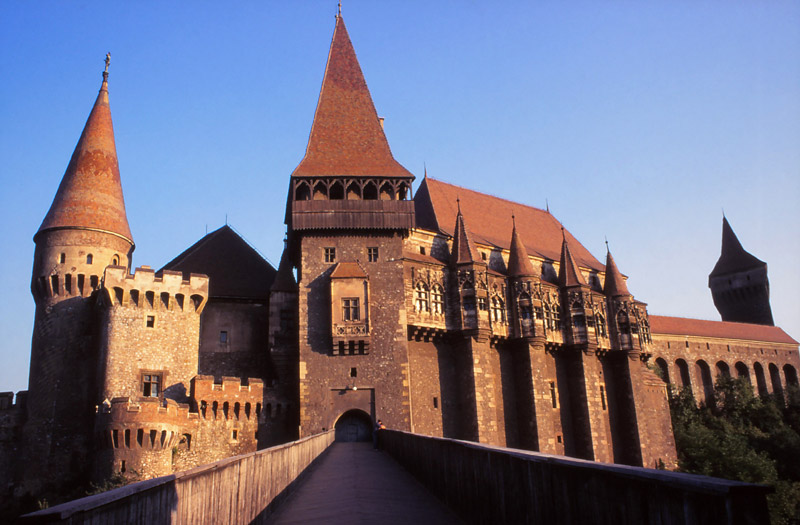
It was built in the 15th century on the orders of a Hungarian feudal lord in Transylvania, a region indelibly linked in the Western mind with vampires, counts and castles.
Later owners added delicately carved stone tracery, balconies and magnificent banquet halls.
Legend has it that the castle even served as a prison for Vlad “The Impaler” Dracula, the Romanian prince who inspired a 19th century novel and spawned an entire genre of horror movies.
When I first visited in the early 1990s there was only one small problem.
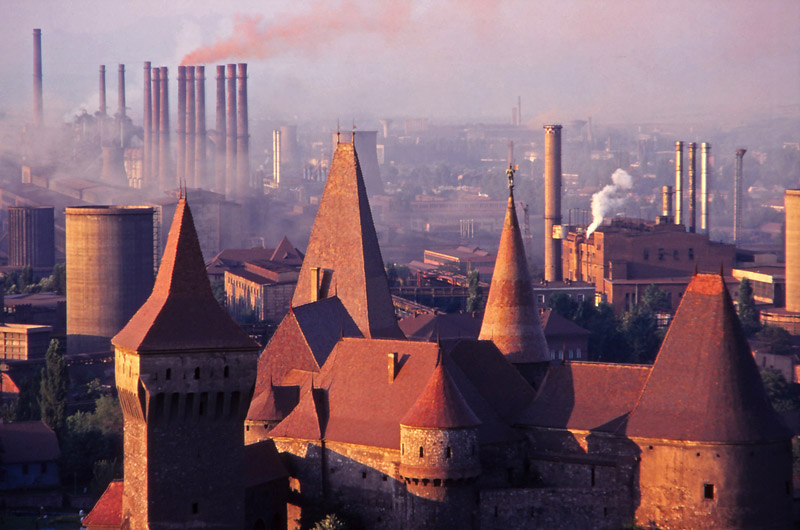
The extraordinary Corvin Castle in Hunedoara, Romania, was almost entirely surrounded by a vast, ghastly, smoke-belching steel mill.
It’s without doubt one of the most surreal sights I’ve seen.
Hunedoara was for centuries a stronghold of the powerful Hunyadi family (Corvin in Romanian), but it has also long been a centre for iron and steel production. As early as the 1600s the town’s furnaces were churning out hundreds of tons of iron.
Steel production ramped up dramatically under communist dictator Nicoale Ceauşescu, thanks to his fetish for heavy industry, and by the 1980s the Hunedoara Steel Works was the biggest in all the Balkans.
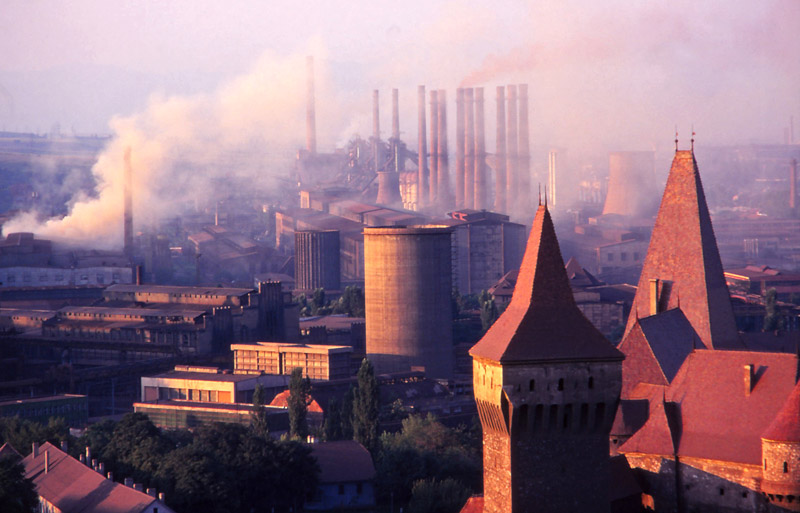
Ceauşescu was executed on Christmas Day 1989 by a hastily assembled firing squad and by the early 1990s the steel works was already in decline — its outdated technology proved ill-suited to a market economy — but it was still huge, polluting and, in an awful way, awe-inspiring.
The castle was surrounded on three sides by factory halls, concrete cooling towers, furnaces and rows of towering chimneys spewing acrid, reddish-brown smoke. The colour was a giveaway for nitrogen dioxide, a toxic gas which forms nitric aid on contact with rain. As the smoke spread it turned the sky pink as if it was always sunset.
Along the fourth side of the castle a clanking cableway carried giant buckets of iron ore directly to the furnaces from a distant mine.
It was like stumbling into some kind of dystopian industrial nightmare or the set of a post-apocalyptic movie.
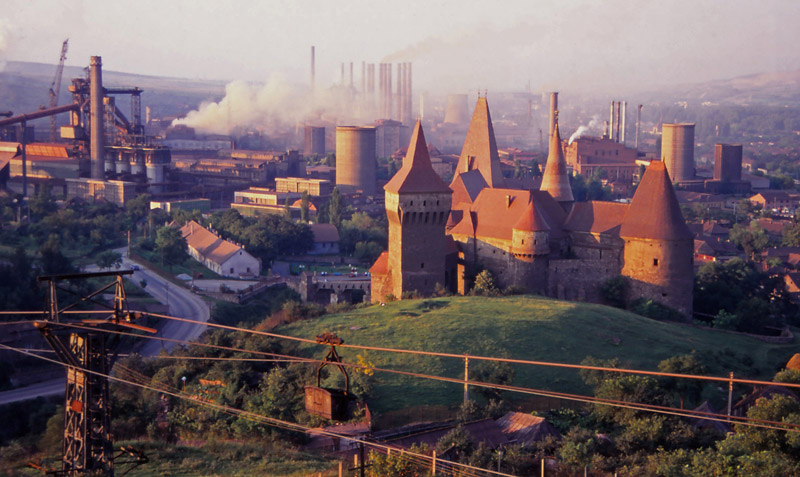
At that time, once you’d paid your castle entry fee (1000 lei, about NZ$1), you could go wherever you liked.
There wasn’t much inside in the way of furnishings but there were courtyards, ramparts, grand halls, and — best of all — unlocked doors that creaked open with a firm push, revealing a maze of dark passages and twisting staircases.
For some reason I decided to sleep that night under the stars — not that I could see any through the nitric haze — on a grassy hill next to the castle. Maybe I didn’t have much money, or maybe I just didn’t like my chances of finding a hotel in Hunedoara.
All night the furnaces roared and groaned and cast a fiery glow across the town. It was like a medieval vision of hell. I kept thinking of the dark satanic mills of the 19th century William Blake poem lamenting the industrial revolution. Needless to say I didn’t sleep much.
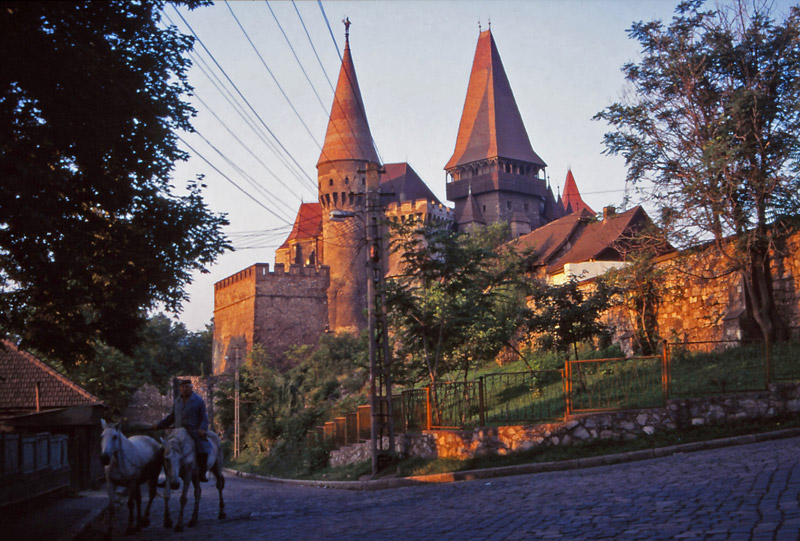
One steel plant had already shut down when I went back for a second visit in 1997; another closed in 1999, according to news reports of the time, along with the cast iron furnaces.
Further shutdowns followed in 2003 and what remained of the steel works was privatised in 2004. The workforce dropped from 20,000 in 1993 to 800 in 2011. In that same year the rows of 90-metre-high chimneys I’d seen spewing toxic smoke were demolished.
Production at the last steel plant was suspended in 2019 and most of the mill has now been demolished. Promotional photos cleverly capture the castle from an angle which avoids the industrial detritus.
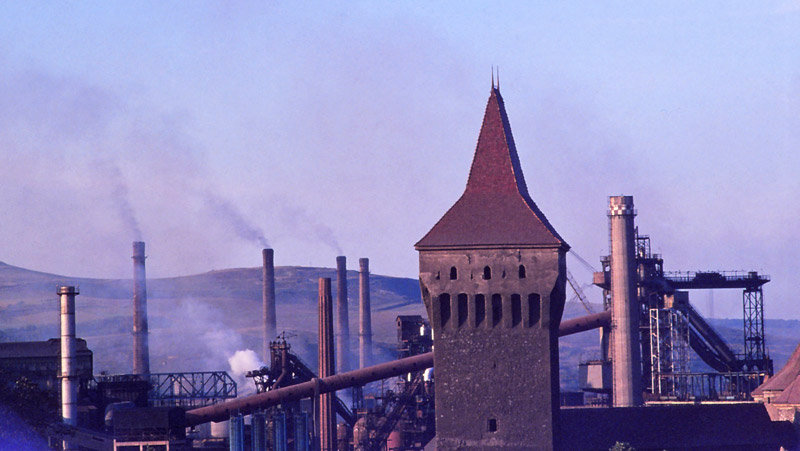
I haven’t been back to Hunedoara since the 1990s but I have returned to other parts of Romania and been amazed by the country’s transformation. Cities which once struck me as dreary and dilapidated are now colourful, clean and full of life.
I suppose if I go back to Hunedoara in a few decades’ time I’ll find a setting worthy of one of Europe’s great medieval castles.
But I’ll also be grateful I saw Corvin Castle when it was surrounded by a giant, smoke-belching steel mill.
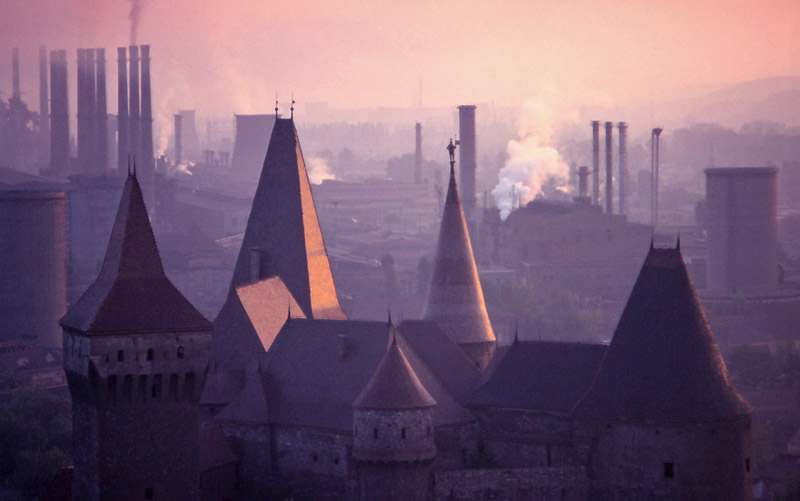
More reading
Romanian blogger Daniel Guţă has written an article about my article about Corvin Castle called The amazing experience of a New Zealander in Hunedoara in the 90s: “It was like a medieval vision of Hell”. It’s in Romanian but there are some photos at the end which show the castle’s surroundings now. The transformation is extraordinary, as Guţă describes:
Most of the huge buildings in the old steel plant were demolished, but less than 10 per cent of the plant area was greened. The reddish fog that rose above Hunedoara disappeared, and over time, over the rubble, the vegetation grew. The air is cleaner now, but it would have been ideal for the ruins of the plant to be completely greened, and to be replaced by parks or forests … I hope that a wild forest will grow over the old industrial area.
You can also read my posts about Romania’s wonderful Merry Cemetery, a mountaintop folk festival which started as a match-making event centuries before Tinder, and Romania’s singing sheepdogs.

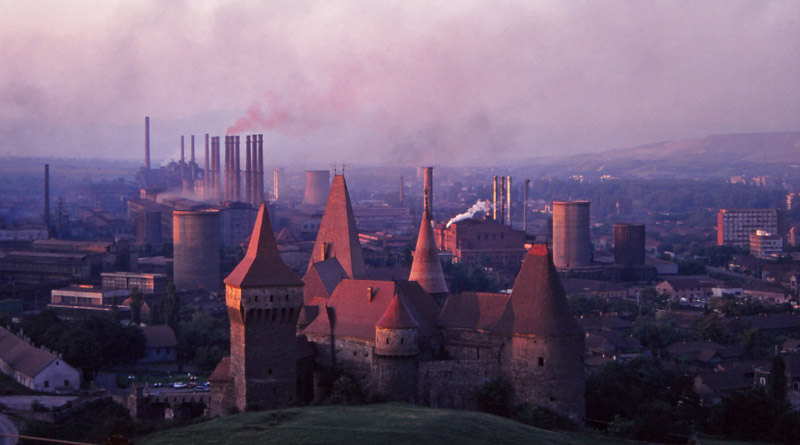
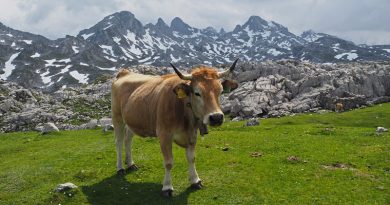

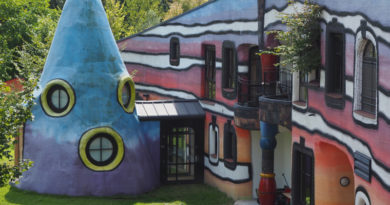
Yes, I do remember my childhood, with the sky always colored in the reddish hues on sunset…
It’s all gone now.
Thanks Irma. I would love to see what the castle’s surroundings look like now. Maybe I need to visit Romania again 🙂
Yes, you should do that! 🙂 Thanx for the old photo! 🙂